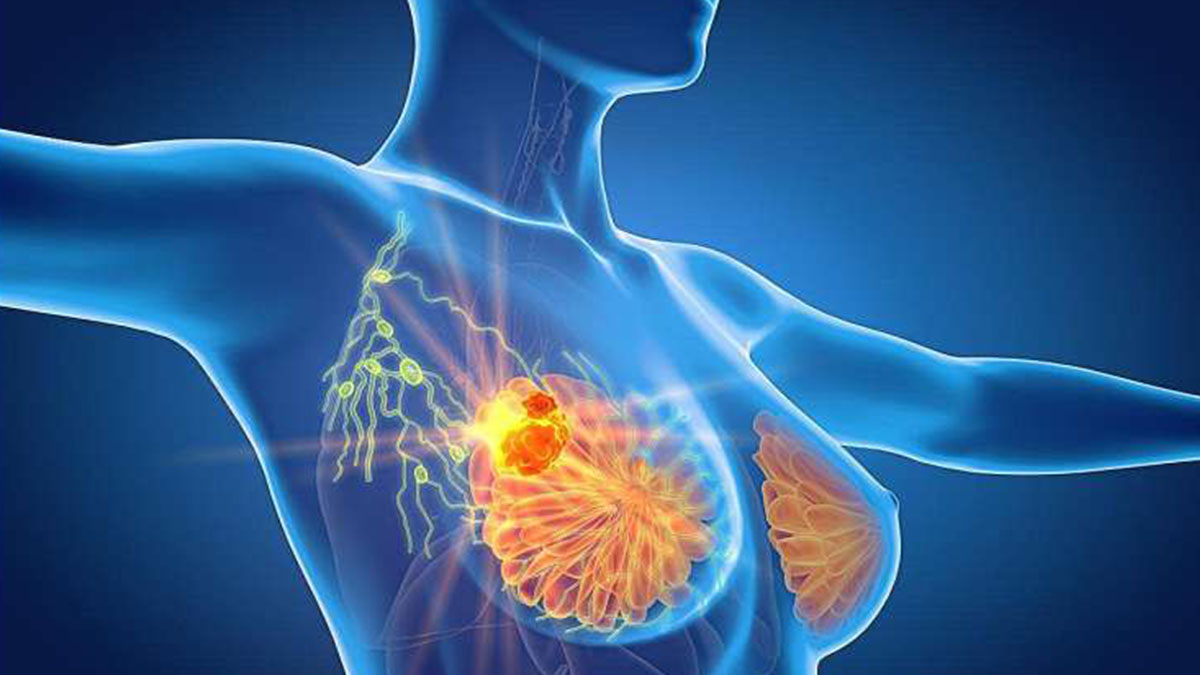
For decades, surgical axillary staging, including sentinel-lymph-node biopsy, has been standard practice for treating early-stage breast cancer. However, a groundbreaking study published in the New England Journal of Medicine (NEJM) suggests that for patients with clinically node-negative (cN0) T1 or T2 invasive breast cancer, omitting axillary surgery is just as effective in terms of survival outcomes.
This study, known as the INSEMA trial, coincided with the annual San Antonio Breast Cancer Symposium (SABCS), offering a new perspective on managing early-stage breast cancer and sparing patients from unnecessary surgeries.
Understanding Axillary Surgery and Sentinel-Lymph-Node Biopsy
Axillary surgery involves removing lymph nodes under the arm to assess cancer spread. Sentinel-lymph-node biopsy (SLNB) is a less invasive technique where only a few lymph nodes are removed for testing. While SLNB is less invasive than traditional axillary dissection, it still carries risks such as pain, lymphedema (swelling due to fluid buildup), and limited arm mobility.
The INSEMA trial investigated whether omitting even this less invasive procedure could deliver comparable outcomes while reducing the risks associated with surgery.
Key Findings of the INSEMA Trial
Led by Dr. Toralf Reimer of the University of Rostock in Germany, the INSEMA trial was a prospective, randomized, noninferiority study. Here’s a breakdown of the findings:
- Study Population: 5,502 patients with node-negative breast cancer scheduled for breast-conserving surgery were included. The trial randomly assigned patients to either:
- Omit axillary surgery (surgery-omission group).
- Undergo sentinel-lymph-node biopsy (surgery group).
- Duration and Follow-Up: Patients were followed for a median of 73.6 months, with data evaluated over five years.
- Survival Rates: The five-year invasive disease-free survival rate was 91.9% in the surgery-omission group and 91.7% in the surgery group.
- Statistical Outcome: The hazard ratio (HR) for invasive disease or death was 0.91 (95% confidence interval: 0.73 to 1.14), meeting the criteria for noninferiority.
Implications for Early-Stage Breast Cancer Patients
The results confirm that for patients with clinically node-negative, early-stage breast cancer undergoing breast-conserving surgery, skipping axillary surgery does not compromise survival. This approach could reduce unnecessary surgical interventions, improving the quality of life for patients.
The lead researchers noted that sentinel-lymph-node biopsy might no longer be essential for certain low-risk patients. Dr. Monica Morrow, in a related editorial, suggested that this trial could mark a paradigm shift in breast cancer treatment, where clinicians prioritize patient outcomes while minimizing treatment burdens.
Benefits of Avoiding Axillary Surgery
- Reduced Surgical Risks: Avoiding axillary surgery lowers the risk of lymphedema, pain, and restricted shoulder movement.
- Improved Recovery: Patients experience quicker recovery times and fewer long-term complications.
- Cost Savings: Eliminating unnecessary procedures could reduce overall healthcare costs.
What Does This Mean for Patients?
Patients with early-stage breast cancer should consult their oncologists about whether omitting axillary surgery is a safe option for their specific case. While the INSEMA trial supports this approach for many node-negative patients, individual risk factors and cancer characteristics remain important in determining treatment plans.
Future Perspectives
As research continues, more refined strategies for personalizing breast cancer treatment may emerge. The results of the INSEMA trial highlight the importance of ongoing clinical trials in improving cancer care and ensuring patients receive the least invasive yet effective treatments.
References
- Toralf Reimer et al., Axillary Surgery in Breast Cancer — Primary Results of the INSEMA Trial, New England Journal of Medicine (2024). DOI: 10.1056/NEJMoa2412063
- Monica Morrow, Sentinel-Lymph-Node Biopsy in Early-Stage Breast Cancer — Is It Obsolete?, New England Journal of Medicine (2024). DOI: 10.1056/NEJMe2414899
